Lazer Coyote Kineticore
Size Tested: Large
MSRP: $109.99
Blister’s Measured Weight: 390 g (Size Large)
Test Location: Washington
Test Duration: 3 months
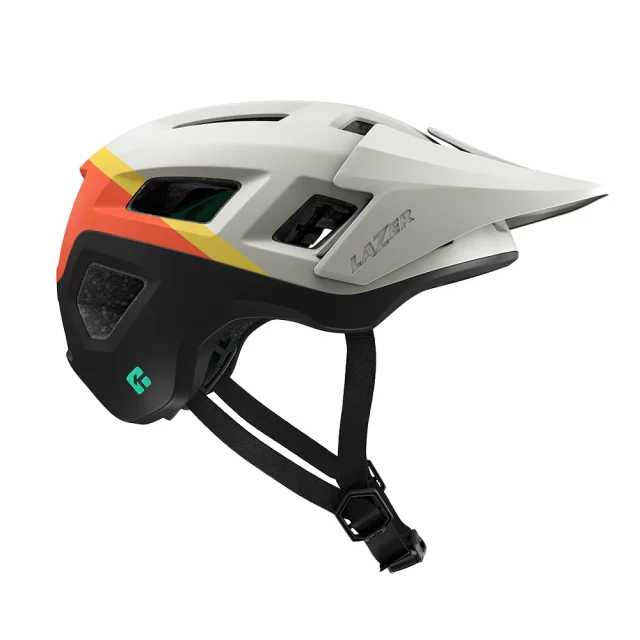
Intro
Lazer launched their Kineticore rotational impact protection system just about a year ago, and now there’s a new, less expensive MTB helmet in their line that uses the tech — the Coyote Kineticore. And having now spent a lot of time in the Coyote, it’s an extremely impressive offering for the money.
Design & Features
The Kineticore construction is a big part of the story of the Coyote Kineticore (a MIPS version is also still available for the time being) — essentially Lazer’s attempt at making a better-breathing, lighter, more comfortable take on a rotational impact system. The idea is that, instead of relying on a moving plastic liner on the inside of the helmet to let the helmet shell rotate relative to the wearer’s head, Lazer uses specifically tailored molding of the EPS foam (the typical expanded foam that’s used in most helmets) with a series of blocks and channels around the inner part of the shell which are designed to deform laterally in the event of an impact that induces a rotational impact, reducing the force that’s applied to the rider’s head and helping to prevent traumatic brain injuries.
Lazer says that this arrangement has a number of advantages as compared to a MIPS liner. For one, it’s lighter and more compact because it doesn’t add another layer of material between the rider’s head and the helmet shell. It also uses less plastic, has the potential to be more comfortable and quieter since there’s no movement between the helmet and the rider’s head along the liner, and it’s also easier to detect crash damage because the Kineticore blocks deform more visibly when hit hard, and there’s no liner covering up the EPS foam shell. Lazer’s take is that the Kineticore arrangement isn’t more fragile than a normal helmet, it just shows when it’s damaged (and therefore needs replacement) more readily. And like the Jackal Kineticore, the Coyote Kineticore gets a five-star safety rating from Virginia Tech.

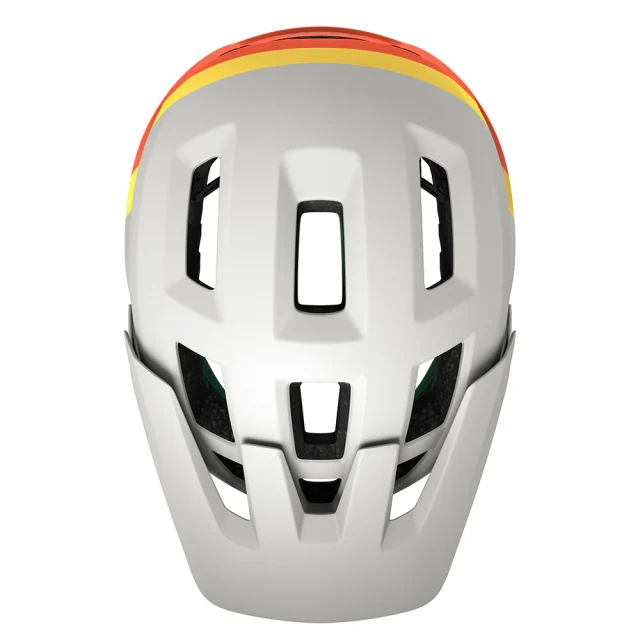
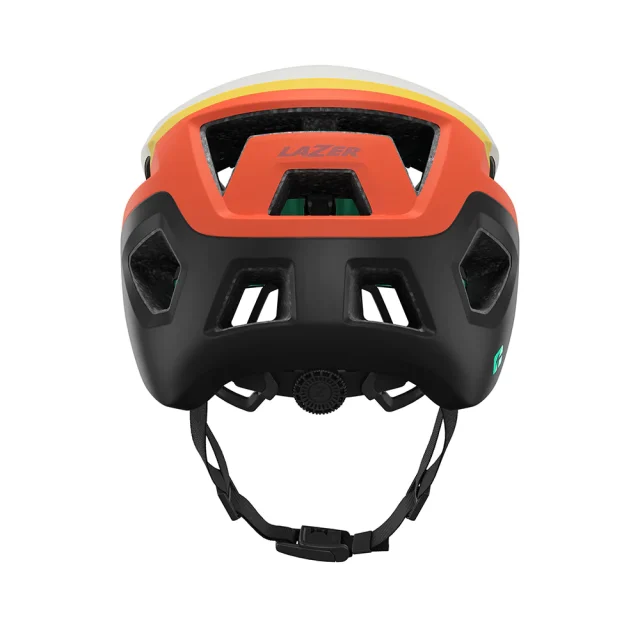
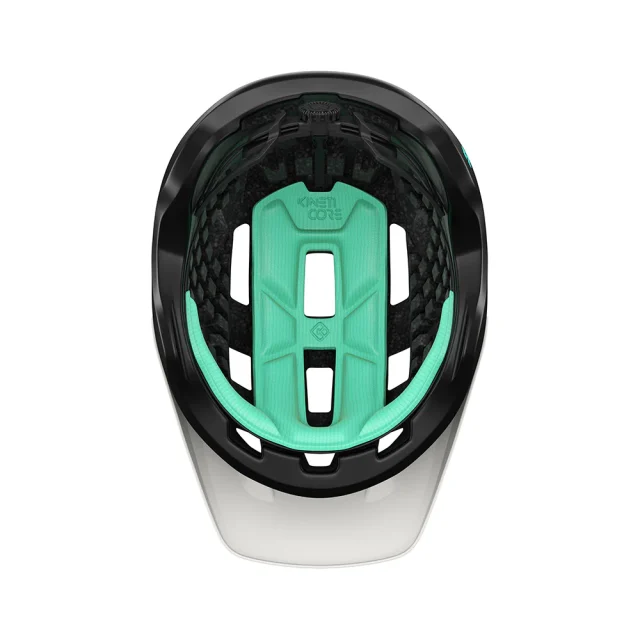
And despite costing a relatively modest $110, the Coyote has a bunch of other nice features, too. The magnetic buckle from the Jackal carries over, as does the optional integrated LED light (sold separately) for the rear of the helmet. The Coyote does forgo the slickly integrated GoPro mount that comes with the Jackal, as well as the goggle strap grippers at the back of the helmet and the Polygiene odor-resistant treatment and has a few minor tweaks such as slightly less supple straps with a coarser weave, but by and large, the fit, feel, and features of the two are impressively similar despite the substantial difference in price. The Coyote also features a three-position adjustable visor (again, similar to the Jackal) that’s on the larger side of the spectrum but not as huge as that on the POC Kortal or Fox Speedframe Pro, for example.
The Jackal also features a dial retention system similar to those used on most modern half-shell helmets, and while it’s subtly pared down as compared to the version used on the Jackal (which Lazer calls “TurnSys Advanced” as compared to the standard “TurnSys” version on the Coyote), in terms of actual fit and function, they’re pretty much identical — with one slight caveat:
In my review of the Jackal Kineticore last year, I noted that the retention system anchor was especially easy to move up and down and that I often needed to readjust it when I put the helmet on because it would move in the process. I never noticed it moving on me while actually being worn, but it was an irritation.
Lazer says that they’ve firmed up the detents on the Jackal to address that issue, and while we haven’t tried the updated version of that helmet, the Coyote is a clear improvement on that front. The retention system is still quite easy to adjust when you want to, but stays put better the rest of the time (in terms of its vertical position — I never had any issues with the actual dial on the Jackal loosening up or anything like that).
Fit
Everyone’s head is different, and we’d always recommend that you try on a helmet before buying it, but the Coyote fits my head really well. I’d describe the coverage as being kind of middle-of-the-road for a half-shell Trail helmet — not especially bulky and high coverage, but pretty solid (especially for its relatively light weight). The fit is nearly identical to the Jackal Kineticore, and pretty similar to the Fox Speedframe Pro, though the latter feels like the interior of the shell slopes down a little more over the forehead.
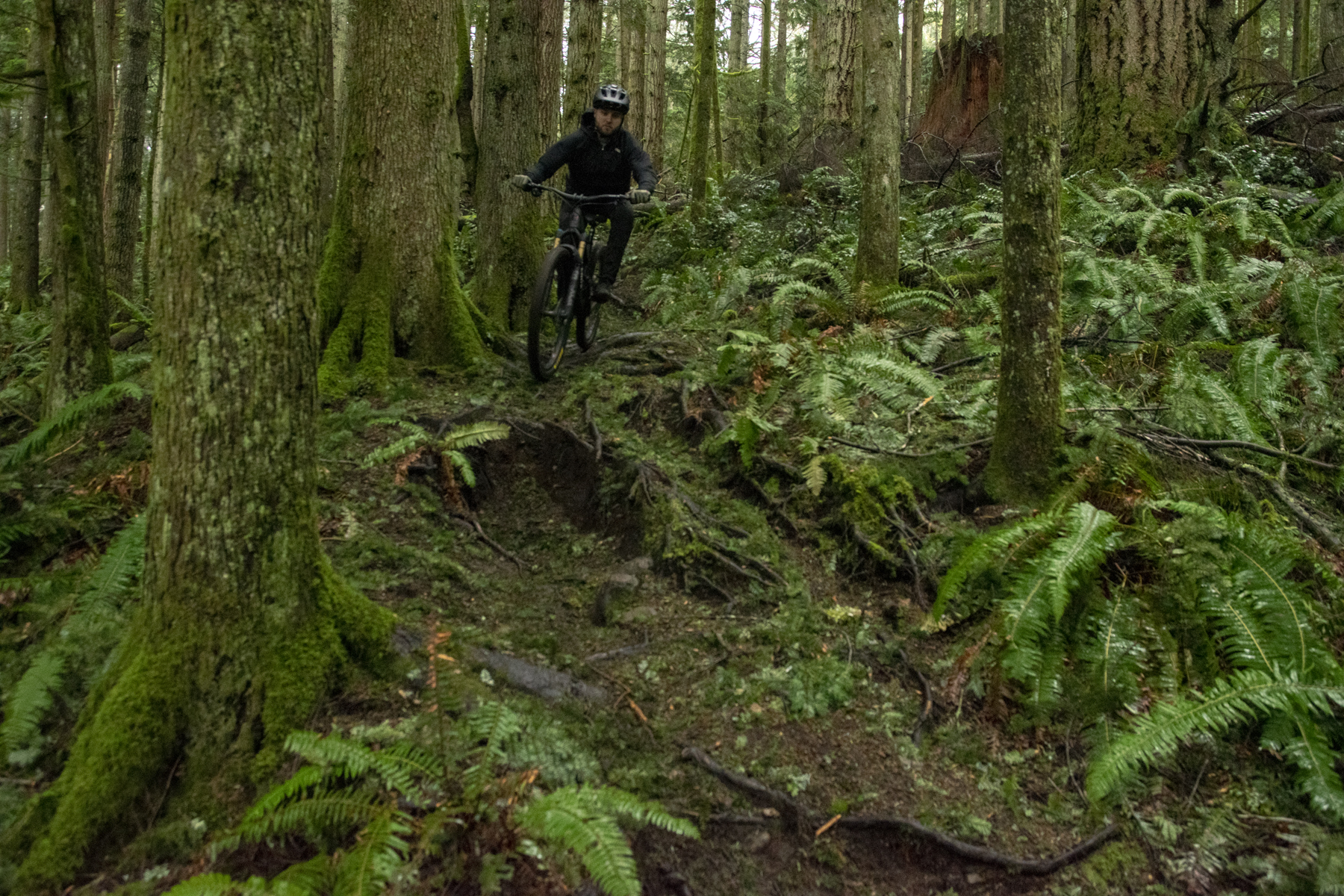
As compared to the Smith Forefront 2, the Coyote feels like it’ll cater to relatively similar head shapes, but wraps farther down the sides of the head and offers more coverage; it’s not as round (i.e., wide relative to its length) as the Giro Source MIPS. The POC Kortal Race MIPS is both a little bit more round and also much deeper in its coverage around the back and sides of the head (and correspondingly bulkier and heavier).
But mostly, the thing that stands out to me about the Coyote Kineticore is how much it fits and feels like a more expensive helmet than it actually is. Most less-expensive options get things like a less-refined, less-comfortable retention system, worse interior padding, and overall lower-quality materials and comfort, and while the Coyote Kineticore has a few very, very subtle differences from the Jackal Kineticore on those fronts, you really need to be paying attention to notice them. It’s an especially nice-feeling helmet for the money, and one that I’m completely happy wearing despite being spoiled by options that cost twice as much or more.
On The Trail
I’ve been really happy with the Coyote Kineticore in three months of using it as my regular Trail bike helmet. It fits me great, breathes well (occasionally too well for winter use, and I have deliberately grabbed warmer options a few times, principally the POC Kortal Race MIPS). Mostly, I’m really impressed at how similar the Coyote Kineticore feels to the Jackal Kineticore that runs double the price. It’s an excellent helmet that doesn’t cost a ton of money and feels better constructed and more nicely refined than most of the less-expensive options that I’ve tried in recent memory.

And while I can’t really asses its performance from a safety standpoint, I also really like how the Kineticore system (as implemented in both the Jackal and Coyote Kineticore) works from a fit and comfort standpoint. Both helmets breathe extremely well, are pretty light for the amount of coverage that they offer, and don’t display any of the noise or sensation of movement over the scalp that less-dialed MIPS implementations can display. And as someone who keeps his head shaved most of the time, I’m also a big fan of the especially large, voluminous interior padding on the Coyote Kineticore, which does a better job of soaking up sweat and stopping it running down my brow than most helmets I’ve tried in recent memory.
If anything, the Jackal Kineticore is even a little bit better ventilated than the Coyote, and the integrated GoPro mount is nice if you want to mount a compatible accessory on the Jackal (I’ve used it for lights a bunch) but the Coyote Kineticore feels impressively similar to its higher-end sibling despite the massive difference in price.
Bottom Line
The Lazer Coyote Kineticore is a really nice, not-super-expensive helmet that manages to offer a very similar fit, features, and quality as its Jackal sibling at half the price. If it fits your head — and it works great on mine — it’s an excellent option for an all-rounder Trail bike helmet that feels like a more premium offering than its price would suggest.

I have recently learned of triple certified helmets – skiing, biking. climbing. I bought one (Dynafit TLT) for a couple reasons. I like the option of. a thin or thicker hat, headband, or nothing underneath. I also want to use my 360 camera again but have heard that ski helmets might not be as safe with one attached. The only study I could find was from 2016 that used climbing helmets. They were tested to be safe with a camera attached so that’s reason #2. And I like a visor on a helmet as it will/has made contact before my face does/did…
It’s bigger but seems lighter than my ski helmets. About the same weight and maybe a little bigger compared to a bike helmet. Can wash the hats and headband when needed. Can take off helmet and no hat-head. Looks a bit dorkier. Works for. me.
Great review. Really thorough. I tried one of these on and LOVED it.
Sadly, I’m a lover of blaze orange or hi-viz yellow helmets for safety reasons, and Lazer offers no bright options at all.
You could customize it yourself?